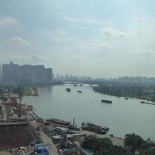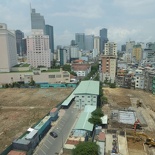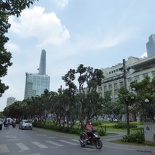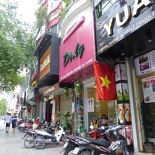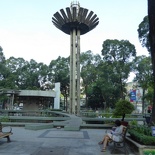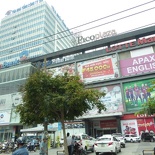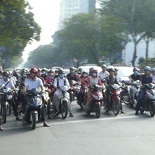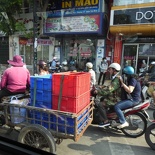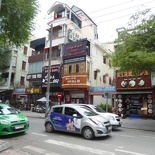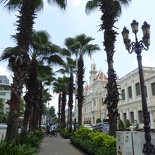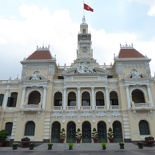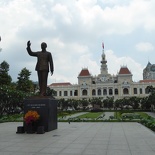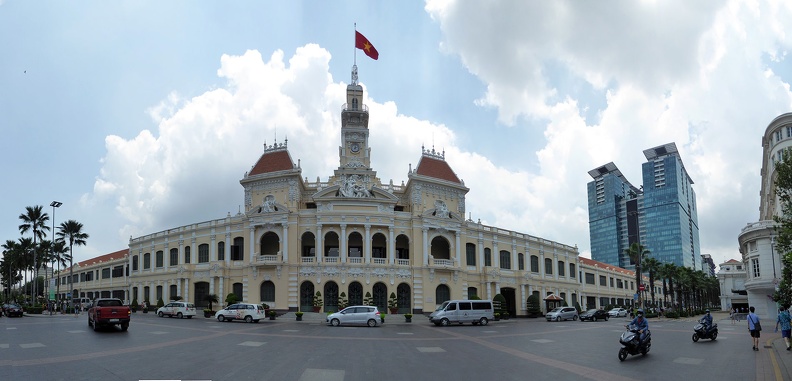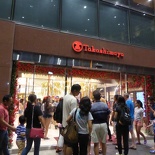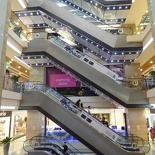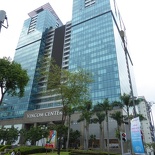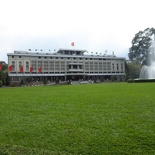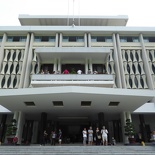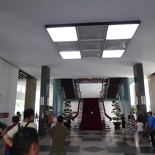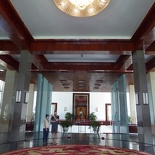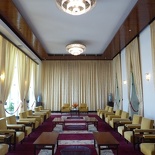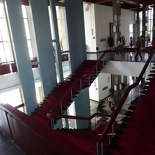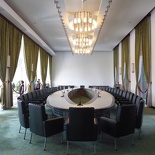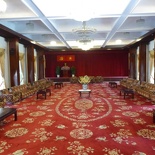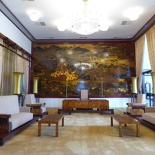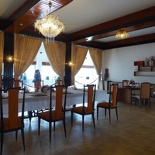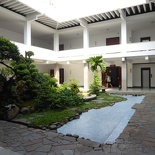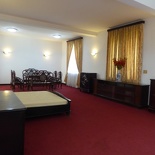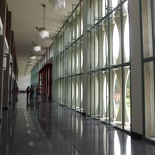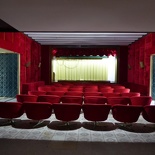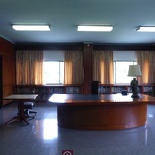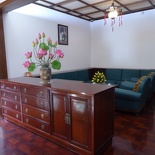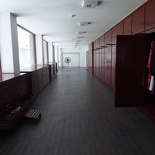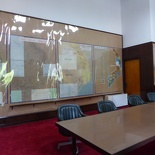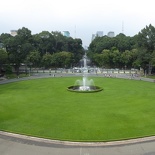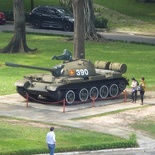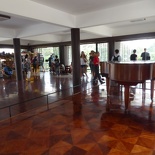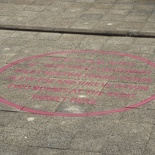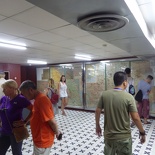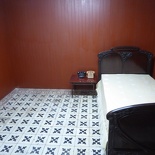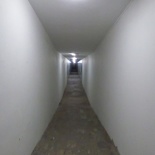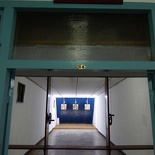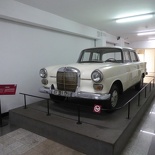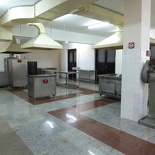MossssssaHo Chi Minh City is Vietnam’s financial center and the country’s economic heart. While Hanoi is the center of government, littered with assortments of official government buildings lined with rows of patriotic Vietnamese flags, it is more prim and proper business here. Money is on the minds of everyone here in Ho Chi Minh City, the city is home to a bustling business center and the headquarters of several multi-national companies rooted in the region.
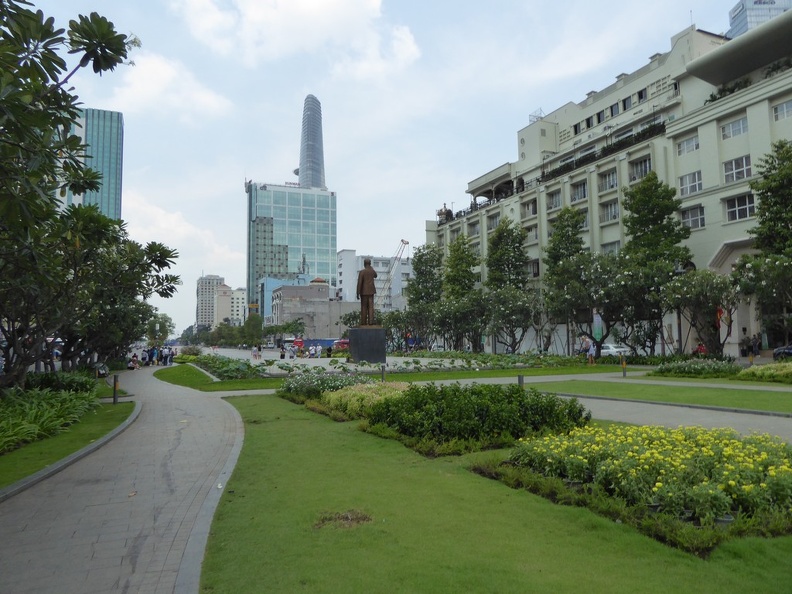
Still informally known as Saigon city, Ho Chi Minh city is also more developed and has better built infrastructural than in the north. The affluence of the people here speaks of itself and the people in the South generally behave differently from those in the North, preferring a more “western lifestyle” and shunning remnants of the war.
Ho Chi Minh city often a blend of modern comforts with tradition. It is not uncommon to see people on the streets dressed in business suits, flooding the streets on weekdays, coupled with an eccentric mix of hawkers wearing conical straw hat and selling street drinks. You also see more people indulging in leisure “luxury” activities which the people in the North can dream of, such as fitness yoga, joggers on the streets and even leisure cyclists on expensive bicycles the roads in the evenings, here a stalk difference to the lifestyles of the North.
The city is the largest by population in Vietnam, home to about 9 million people, with the bulk in the city metropolitan area. District 1 is the best way to experience a dynamic and booming city buzz. To spend your visit there, Ho Chi Minh offers a combination of historical buildings, shopping and historical sites outside of the city. The Streets and boulevards are lined with evergreen trees which are easily navigable using paper or digital maps.
Getting around
The Ho Chi Minh is also one of the few Vietnamese cities with an integrated City Metro system. This is served via a light rail rapid transit network, is currently in the preparation stages, with the first line connecting Bến Thành to Suối Tiên Park in District 9 and subsequently to Tham Luong in District 12 are currently under construction, with the District 9 extension to be completed by 2019. The City Metro system is expected to serve more than 160,000 passengers daily.
Moreover, Ho Chi Minh itself is separated by Districts, with the heart of the city being in District 1. Private hire car services are very affordable ways to travel in Ho Chi Minh and safer than taxis in general. These private hire services range from your usual Uber and Grab car options, as well as private hire motorcycles.
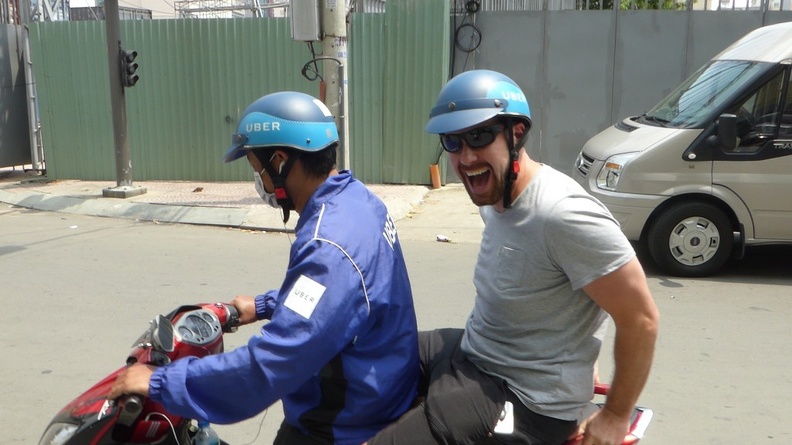
Private hire cars are usually recommended over Taxis as they are not only safer but also prevent taxi fare shocks. You can use these private hire car apps to accurate determine the best fares to your destination to avoid being ripped-off.
The city is the largest by population in Vietnam, home to about 9 million people, with the bulk in the city metropolitan area.
Majority of the city touristy spots are also located in this central District 1. Today, the city core in the central district is adorned with elegant boulevards. This is a reflection of the historic French colonial roots the city had through the buildings.
Some of the historic colonial hotels include the Hotel Majestic, dating from the French colonial era, and the Rex and Caravelle hotels. These buildings used to be former hangouts during the Vietnam War for American officers and war correspondents.
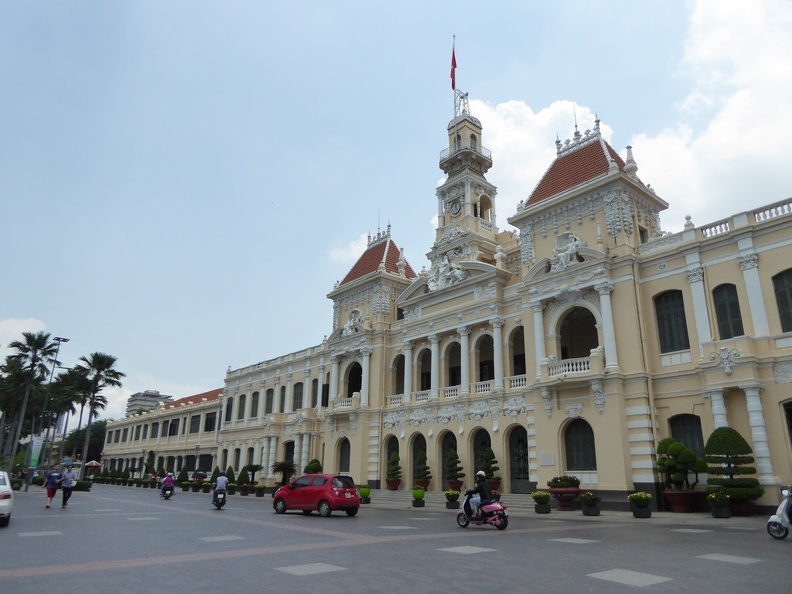
Ho Chi Minh City Hall
Ho Chi Minh City Hall or Saigon City Hall was built in 1902. It sits in front of a busy traffic intersection in one of the main shopping districts of Ho Chi Minh City. The building was built with a French colonial style facing a large open garden park with a statue of Ho Chi Minh on it flanked by towering buildings on both sides.
Following a 6 year construction, the City Hall was completed in 1908. Also known as the Hôtel de Ville de Saïgon, until it was renamed to Ho Chi Minh City People’s Committee after 1975. Despite the City Hall being a rather popular tourist spot with great photo opportunities, the building is however, not open to the public.
Ho Chi Minh City Hall 180 degree Panorama.
Shopping districts
From this elegant colonial building, you can take a stroll down along the Nguyen Hue road leading south east, leading into Ho Chi Minh main shopping districts. Here, you can find several upscale malls and international tenants, such as Takashimaya. There is a Parkson plaza area near city hall as well as the Vincom Center Mall. Moreover, this road from the park is also the spot where you can find rows of night markets at night.
Reunification/Independence Palace
Reunification Palace is definitely the place to visit for its significance it played as a command center and residence of the president during the Vietnam War. You enter the palace grounds via a side ticketing entrance building via the main road.
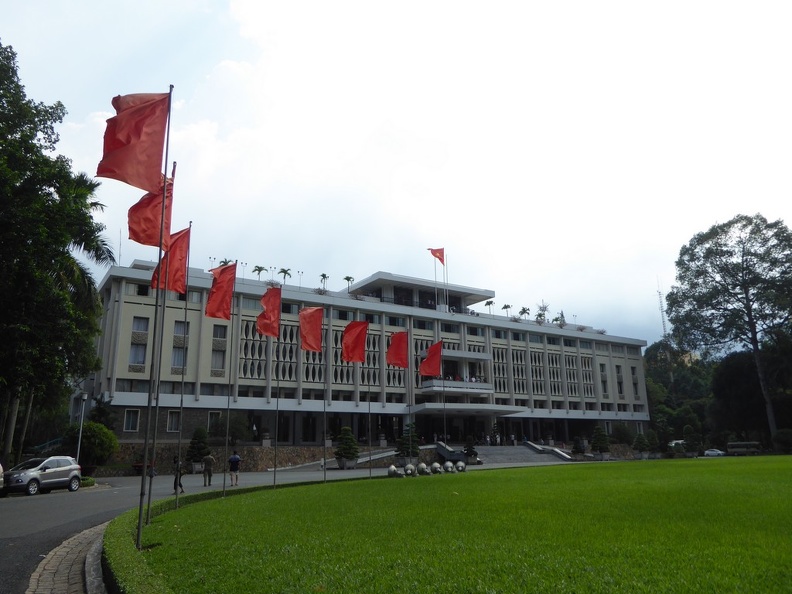
The palace sits squarely facing a large circular green lawn with a central fountain, flanked by a line of flagpoles bearing the Vietnamese flag. A short walk along this lawn brings you right up to the front of the palace.
The main building itself bears resemblance of 60s building architecture cues. Such as slotted vertical windows as well a central staircase with rectangular shaped handrails. You enter the building climbing up a series flight of steps up a sheltered pouch area. A balcony overlooking the grassy patch can be seen on the second floor of the building front.
Panorama of the Palace exterior, front facade and lawn.
Construction of the palace building started in July 1962, with its completion on October 1966. It was designed by Vietnamese architect Ngô Viết Thụ and was the home and workplace of the President of South Vietnam during the Vietnam War.
State rooms
The building a a working one, with a full suite of large rooms, ambassador chambers and conference rooms to host guests, world leaders and events of any desirable size. The 26 meter tall building spans over 4 floors with 2 basements. Here, I got to tour the various interiors of the building, starting with the state meeting and dining rooms.
The ground floor mainly houses large sitting halls and dining areas for distinguished guests particularly for discussions and state banquets. The Banquet Chamber in the Independence Hall and Ministers’ cabinet room are few such places.
Moving on, the upper floors are mostly residential areas, starting with a dedicated residential “chalet style rooms” on the second floors. This area is where foreign guests are hosted. Also, these rooms are large, able to host large delegations and their supporting personnel. A nice touch was the presence of dedicated dining rooms with western and oriental settings to suit individual tastes.
Furthermore, there is even a mini cinema and theater on the top few floors. Within the upper floors are the working quarters of the building, such as the President’s Office in the Hall, library as well as the President’s bedroom, attire and robe room. The president’s peace time bedroom is expansive, with an area not limited to his bed and a sitting area, but a dedicated Lounge area able to sit about 5 people in the same room.
Also, the top floors of the palace also offers nice views over the city of Saigon, overlooking the Reunification Palace front fountain lawn, which is created as a circle using Chinese Feng Shui ideology to prevent building “qi” (or luck) from leaving the building too quickly.
From the top, you can also see the two Vietnamese Russian-made T-54 tanks used by the North Vietnamese. These tanks rode right through the palace gates at the end of the Vietnam War during the Fall of Saigon on April 30, 1975. Interestingly, the Roof of Reunification Palace had been converted into a recreational and dancing area, complete with wooden flooring and a grand piano for roof top parties.
Up here you can see the UH-1 helicopter used in evacuations, as well as the two spots on the roof where bombs where dropped onto the palace itself. The damage had long since been repaired.
Independence Palace old war room
The basement is home to the old war room underneath the Palace. Here, you can view in person the underground war rooms, planning map rooms, communication and bedrooms used during the war.
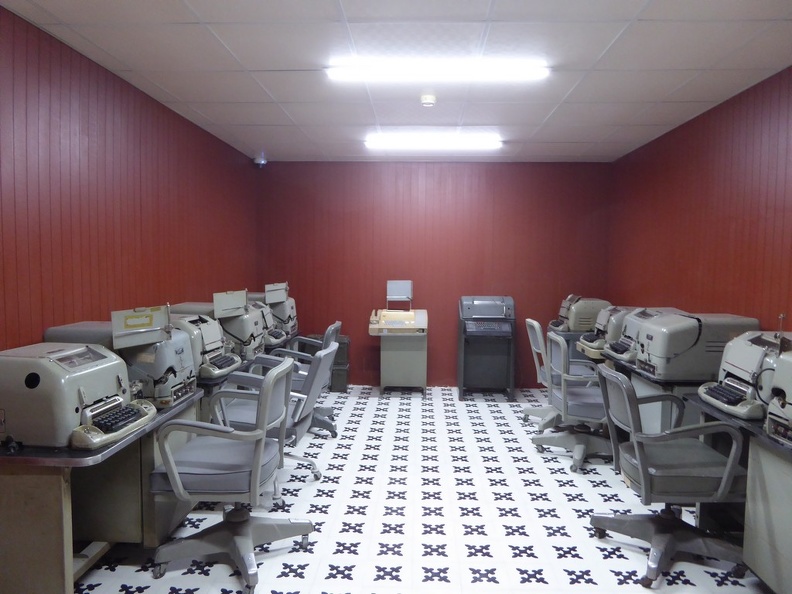
All the equipment sited here is of course dated from an era long forgone, such as analog dial phones, analog radios and mechanical typewriters. The layout of the war room is simplistic and functional. Through the underground complex, there are lines of overhead utility pipes line the top of the piping fresh air down into the bunker area.
Here you can find too the exit of the quick access staircase down to the bunker from the Presidential office. Moreover, the bunker-like underground environment provides a safe haven from conventional overhead shelling of aircraft bombs and artillery during the war, though it is not nuclear or biologically sealed.
Lastly, the tour of the palace ends at the rear of the palace currently houses a gift shop and a place for workers quarters, a kitchen as well as an indoor gun firing range. Also, a number of ministerial cars and antiques are also on display here.
In conclusion, the palace is a great place to tour in the District 1 area of the city. It is unmistakable one of the few prominent buildings in the city. The tour route is largely linear, where you can easily cover all rooms in the palace at a single pass without having to backtrack.
In all, you are good for about 2-3 hours at the Palace, providing opportunities to visit several other sights in Ho Chi Minh which awaits as follows.
- Ho Chi Minh City photo album.
- Independence/Reunification Palace photo album.

